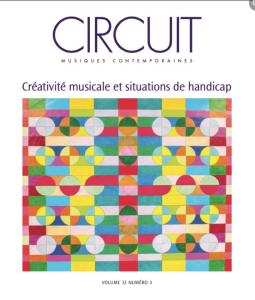Author: Anabel Maler
Publication details: Circuit Musiques contemporaines, Volume 32
Weblink: www.erudit.org

Abstract: In this article, I argue that deafness is not a deficit for musical experience; rather, it is a source of musical ability. I do so by summarizing some of the different techniques used by Deaf musicians who create music in a signed language. I focus on how signing musicians use different types of movement to create rhythm, and use the movement of their bodies through space to create a sense of melody. Rhythm in signed music is created in a visual-tactile medium, rather than a sonic one. Specifically, it is created through movement of the hands, body, face, and head. Melody in signed music involves the directed, purposeful movement of the body through the signing space, which uses movements and holds to create dynamic, kinetic lines. I explore these concepts using examples from signed rap music by the artist Sean Forbes, and an asl cover of Carrie Underwood’s song Blown Away by Rosa Lee Timm.